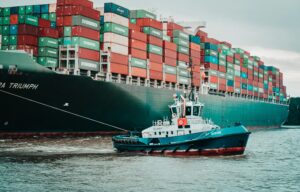HOPE
Humanitarian Operations Lab
 Every year millions of people suffer the effects of natural disasters and armed conflicts worldwide. Hundreds of millions of people live in extreme poverty and lack reliable access to basic services such as water and electricity. Climate change increases the potential severity of disasters and armed conflicts as well as the risk of extreme poverty. Humanitarian operations aim to alleviate human suffering in the aftermath of disasters and improve the long-term living conditions of populations affected by disasters and extreme poverty. The organizations that manage humanitarian operations follow the principles of humanity, neutrality, impartiality, and independence. In close collaboration with humanitarian organizations and other nonprofit organizations, we build and disseminate actionable knowledge through research into humanitarian operations management.
Every year millions of people suffer the effects of natural disasters and armed conflicts worldwide. Hundreds of millions of people live in extreme poverty and lack reliable access to basic services such as water and electricity. Climate change increases the potential severity of disasters and armed conflicts as well as the risk of extreme poverty. Humanitarian operations aim to alleviate human suffering in the aftermath of disasters and improve the long-term living conditions of populations affected by disasters and extreme poverty. The organizations that manage humanitarian operations follow the principles of humanity, neutrality, impartiality, and independence. In close collaboration with humanitarian organizations and other nonprofit organizations, we build and disseminate actionable knowledge through research into humanitarian operations management.
We focus on five areas:
1. Optimization of post-disaster and development operations
2. Humanitarian operations management and armed conflict
3. Global supply chain management and decentralization
4. Donations and volunteer management
5. Humanitarian information management
 Optimization of post-disaster and development operations
Optimization of post-disaster and development operations
Post-disaster operations have relatively short-term duration (months), high urgency, and high uncertainty. Development operations have relatively long-term duration (years), low urgency, and low uncertainty. While post-disaster operations aim to maximize the level of service offered to beneficiaries subject to budget and capacity constraints, development operations
aim to minimize cost subject to an acceptable level of service. Humanitarian organizations often implement post-disaster and development operations simultaneously. We combine post-disaster with development research to analyze their mix using the disaster-management-cycle framework. This framework includes response and rehabilitation (post-disaster operations), and mitigation and preparedness (development operations).
Publications:
- Corbett, C., A.J. Pedraza-Martinez, L.N. Van Wassenhove. 2022. Sustainable Humanitarian Operations: An Integrated Perspective. Production and Operations Management, 31(12), 4393-4406.
- Marcantonio, R. 2022. Toxic Diplomacy Through Environmental Management: A Necessary Next Step for Environmental Peacebuilding. World Development Perspectives, 28, Article 100471.
- Besiou, M., A.J. Pedraza-Martinez, L.N. Van Wassenhove. 2021. Humanitarian Operations and the UN Sustainable Development Goals. Production and Operations Management, 30(12) 4343–4355.
- Stauffer, J.M., A.J. Pedraza-Martinez, L. Yan, L.N. Van Wassenhove. 2018. Asset Supply Networks in Humanitarian Operations: A Combined Empirical-Simulation Approach. Journal of Operations Management, 63 44–58.
- Besiou, M., A.J. Pedraza-Martinez, L.N. Van Wassenhove. 2018. OR Applied to Humanitarian Operations. European Journal of Operational Research, 269(2) 397–405.
- Wowak, K. D., I. Adjerid, C. M. Angst, J. C. Guzman. 2016. A tutorial on empirical ICT4D research in developing countries: Processes, challenges, and lessons. Communications of the Association for Information Systems 38(21): 353-374.
- Pedraza-Martinez, A.J., O. Stapleton, L.N. Van Wassenhove. 2011. Field Vehicle Fleet Management in Humanitarian Operations: A Case-‐Study Based Approach. Journal of Operations Management, Jul 2011, 29(5), 404–421.
Affiliated Faculty:
 Humanitarian operations management and armed conflict
Humanitarian operations management and armed conflict
Armed conflicts impose additional challenges compared to humanitarian operations for disaster response. These challenges include the safety of the humanitarian workers and the mobility of victims who often become internally displaced persons or refugees. We follow an interdisciplinary approach to understand the complexity of armed conflicts and their implications for humanitarian operations.
Publications:
- Kotsi, T., O.Q. Wu., A.J. Pedraza-Martinez. 2022. Donations for Refugee Crises: In-kind Versus Cash Assistance. Manufacturing & Service Operations Management, 24(6) 3001–3018.
- Hook, K., Marcantonio, R. 2022. Environmental Dimensions of Conflict and Paralyzed Responses: The Ongoing Case of Ukraine and Future Implications for Urban Warfare. Small Wars and Insurgencies.
- Pearson, A.L., Mack, E.A., Ross, A., Marcantonio, R., Zimmer, A., Bunting, E.L., Smith, A.C., Miller, J.D., Evans, T. and HWISE Research Coordination Network, 2021. Interpersonal
- Shao, L., J. Ryan, D. Sun. 2020. Responsible Sourcing under Asymmetric Information: Price Signaling vs. Supplier Disclosure. Decision Sciences, 51(5), 1082-1109
- Ferrer, F., J. Martin, M.T. Ortuño, A.J. Pedraza-Martinez, G. Tirado and B. Vitoriano. 2018. Multi-Criteria Optimization for Last Mile Distribution of Disaster Relief Aid: Test Cases and Applications. European Journal of Operational Research, 269(2) 501–515.
- Marcantonio, R. A., Attari, S. Z., and Evans, T. 2018. Farmer Perceptions of Conflict Related to Water in Zambia. Sustainability. Vol. 10 (2) p. 313-331.
- Jola-Sanchez, A.F., A.J. Pedraza-Martinez, K. Bretthauer, and R. Britto. 2016. Effect of Armed Conflicts on Humanitarian Operations: Total Factor Productivity and Efficiency of Rural Hospitals. Journal of Operations Management, 45, 73–85.
- Pedraza-Martinez, A.J., L.N. Van Wassenhove. 2013. Vehicle Replacement in the International Committee of the Red Cross. Production and Operations Management, 22(2), 365-‐376.
Affiliated Faculty:
 Global supply chain management and decentralization
Global supply chain management and decentralization
International humanitarian organizations (IHOs) manage global supply chains that face unique challenges in terms of access to beneficiaries, speed of response, equity, and cost of aid distribution. IHOs often locate their headquarters in developed countries (close to donors). IHOs’ field programs operate in remote regions all over the world (close to beneficiaries) and often collaborate with local organizations (implementing partners). Headquarters, field programs, and implementing partners may have different incentives that are difficult to align. We study global humanitarian supply chains that are run by decentralized IHOs with the
support of local implementing partners.
Publications
-
- Zhai, C.⋄, K. Bretthauer, J. Mejia, A.J. Pedraza-Martinez. 2023. Improving Drinking Water Access and Equity in Rural Sub-Saharan Africa. Forthcoming, Production and Operations Management.
- Ryan, J., L. Shao, D. Sun. 2022. Contracting Mechanisms for Stable Sourcing Networks. Manufacturing & Service Operations Management, 24(5), 2558-2576
- Lee, J., Hyun Seok Lee, Hyoduk Shin, Vish Krishnan. 2021. Alleviating Drug Shortages: The Role of Mandated Reporting-Induced Operational Transparency;, Management Science, 67, 2021.
- Li, Z., S. Lu, J. Ryan, D. Sun. 2021. Impact of Organizational Structure on Development Strategy under Equity-Based Incentives. Production and Operations Management, 30(4), 984-996.
- Pedraza-Martinez, A.J., S. Hasija, L.N. Van Wassenhove. 2020. Fleet Coordination in Decentralized Humanitarian Operations Funded by Earmarked Donations. Operations Research, 68(4) 984–999.
- Li, Z., J.K. Ryan, L. Shao, D. Sun. 2019. Incentive-Compatible in Dominant Strategies Mechanism Design for an Assembler under Asymmetric Information. Production and Operations Management, 28(2), 479-496.
- Shakya, H.B., J.M. Perkins, M. Traeger, A.C. Tsai, D.R. Bangsberg, B. Kakuhikire, N. A. Christakis. 2018. Social network correlates of IPV acceptance in rural Honduras and rural Uganda. SSM-Population Health, 4, 236-243.
- Stauffer, J.M., A.J. Pedraza-Martinez, L.N. Van Wassenhove. 2016. Temporary Hubs for the Global Vehicle Supply Chain in Humanitarian Operations. Production and Operations Management, 25(2) 192–209.
- Li, Z., J.K. Ryan, L. Shao, D. Sun. 2015. Supply Contract Design for Competing Heterogeneous Suppliers under Asymmetric Information. Production and Operations Management, 24(5), 791–807.
- Besiou, M., A.J. Pedraza-Martinez, L.N. Van Wassenhove. 2014. Vehicle Supply Chains in Humanitarian Operations: Decentralization, Operational Mix and Earmarked Funding. Production and Operations Management, 23(11) 1950–1965.
- Yadav, P., O. Stapleton, L. N. Van Wassenhove. 2013. Learning from coca-cola. Stanford Social Innovation Review, 11(1), pp.51-55.
Affiliated Faculty:
 Donations and volunteer management
Donations and volunteer management
Donors are the main source of funding for humanitarian operations. Donors may give cash, in-kind items, and time (volunteering). Cash donors prefer the autonomy to earmark their donations. Humanitarian organizations allow earmarking, but earmarking imposes constraints on the organizations’ supply chains. Donors may also give in-kind donations that create logistics
challenges. Volunteers donate their time and expect a fulfilling experience from volunteering. They are not subject to contracts, which makes them different from employees who are compensated through salary. We study the behavior of donors and volunteers as a critical component of humanitarian operations.
Publications
-
- Aflaki, A., A.J. Pedraza-Martinez. 2023. Competition and Collaboration on Fundraising for Short-Term Disaster Response: The Impact on Earmarking and Performance. Forthcoming, Manufacturing & Service Operations Management.
- Kotsi, T., A. Aflaki, G. Aydin, A.J. Pedraza-Martinez. 2023. Dynamic Allocation of NGO Funds among Program, Fundraising, and Administration. Forthcoming, Manufacturing & Service Operations Management.
- Urrea, G., A.J. Pedraza-Martinez, M. Besiou. 2019. Volunteer Management in Charity Storehouses: Experience, Congestion and Operational Performance. Production and Operations Management, 28 (10) 2653–2671.
- Mejia, J., G. Urrea., A.J. Pedraza-Martinez. 2019. Operational Transparency in Crowdfunding Platforms: Effect on Donations for Emergency Response. Production and Operations Management, 28(7) 1773–1791.
- Aflaki, A., A.J. Pedraza-Martinez, 2016. Humanitarian Funding in a Multi-Donor Market with Donation Uncertainty. Production and Operations Management, 25 (7), 1274–1291.
Affiliated Faculty:
 Humanitarian information management
Humanitarian information management
Before disasters happen, information supports mitigation and preparedness. During post-disaster operations, information is the basis for needs assessments that determine demand and deployments to deliver aid to beneficiaries. Information helps humanitarian organizations and other stakeholders, such as academics, to evaluate the impact of humanitarian operations.
We explore the vital role of information for planning, monitoring, and evaluation of humanitarian operations and disaster management.
Publications:
-
- Yoo, C., E. Yoo, L. Yan, A.J. Pedraza-Martinez. 2023. Speak with One Voice? Examining Content Coordination and Social Media Engagement during Disasters. Accepted at Information Systems Research
- Yan, L., A.J. Pedraza-Martinez. 2019. Social Media for Disaster Management: Operational Value of the Social Conversation. Production and Operations Management, 28(10) 2514–2532.
- Bhargava, H.K., B. Kim, D. Sun. 2013. Commercialization of Platform Technologies: Launch Timing and Versioning Strategy. Production and Operations Management, 22(6), 1374–1388.
- Porter, C., S. Devaraj, D. Sun. 2013. A Test of Two Models of Value Creation in Virtual Communities. Journal of Management Information Systems, 30(1), 261-292.
Affiliated Faculty:










